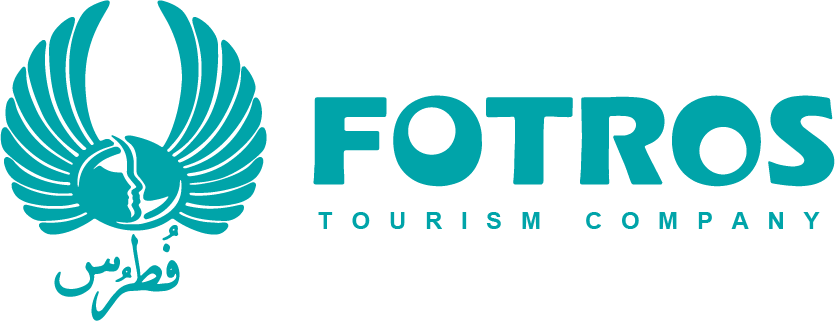
Medical Surgeries
Arthroscopy


Arthroscopy is a minimally invasive surgical procedure used to diagnose and treat various joint-related conditions and injuries. It involves the use of a small, specialized instrument called an arthroscope, which is a thin, flexible tube equipped with a camera and light source. The arthroscope is inserted through small incisions near the joint, allowing the surgeon to visualize the joint's interior on a monitor in real time. Arthroscopy is commonly used in orthopedic and sports medicine to examine and treat problems in joints like the knee, shoulder, hip, wrist, and ankle.
There are several types of arthroscopy
Knee Arthroscopy: Knee arthroscopy is one of the most common types and is used to diagnose and treat various knee issues, including torn ligaments (like the ACL or PCL), meniscus tears, cartilage damage, and synovitis (inflammation of the lining of the joint).
Shoulder Arthroscopy: Shoulder arthroscopy is performed to address conditions like rotator cuff tears, shoulder impingement, labral tears, and shoulder instability.
Hip Arthroscopy: Hip arthroscopy is used to diagnose and treat problems such as femoroacetabular impingement (FAI), labral tears, hip joint cartilage damage, and snapping hip syndrome.
Wrist Arthroscopy: Wrist arthroscopy is employed for conditions like carpal tunnel syndrome, ligament tears, and other wrist joint disorders


Ankle Arthroscopy: Ankle arthroscopy is used for the evaluation and treatment of ankle conditions, such as loose bodies, ligament injuries, and cartilage damage.
Elbow Arthroscopy: Elbow arthroscopy is less common but can be utilized to treat issues like tennis elbow, osteochondritis dissecans (OCD), and loose bodies in the elbow joint.
Temporomandibular Joint (TMJ) Arthroscopy: TMJ arthroscopy is used to diagnose and treat conditions affecting the jaw joint, such as temporomandibular joint disorder (TMD).


Before Arthroscopy:
Consultation: You will have a consultation with your orthopedic surgeon before the procedure. This is the time to discuss your medical history, any medications you're taking, and ask any questions you may have.
Medications: Your surgeon may advise you to stop taking certain medications before the surgery, especially blood thinners. Follow their instructions regarding medication adjustments.
Fasting: You will typically be asked to fast for a certain period before the surgery, typically from midnight the night before. This reduces the risk of aspiration during the procedure.
Arrange Transportation: You won't be able to drive yourself home after the surgery, so arrange for a friend or family member to pick you up.
Pre-operative Preparations: Follow any specific pre-operative instructions provided by your surgeon. These may include showering with a special soap, wearing loose-fitting clothing, and leaving jewelry and valuables at home.
After Arthroscopy:
Recovery Room: After the procedure, you will be taken to a recovery room, where the medical staff will monitor your vital signs and ensure you're comfortable.
Follow-Up Appointment: Schedule a follow-up appointment with your surgeon to monitor your progress and remove any stitches or staples.
Discharge: Most arthroscopic procedures are done as outpatient surgery, so you'll be discharged the same day. Make sure your transportation is ready.
Pain Management: You may experience pain and discomfort after the procedure. Your surgeon will prescribe pain medications or recommend over-the-counter pain relievers. Follow their instructions for taking these medications.


Rest and Elevation: Rest is essential during the initial recovery period. Elevate the operated limb to reduce swelling. Ice packs may also be recommended.
Dressings and Incision Care: Keep the incisions clean and dry. Your surgeon will provide specific instructions on when and how to change dressings.
Physical Therapy: Depending on the type of arthroscopic procedure, your surgeon may recommend physical therapy. Follow the therapist's instructions and attend all scheduled sessions.
Activity Restrictions: Your surgeon will provide guidance on when you can gradually resume regular activities and sports. Follow these recommendations to avoid complications
Complications: Be aware of potential complications, such as infection, excessive bleeding, or severe pain. Contact your surgeon immediately if you experience any unusual symptoms.
Patience: Arthroscopy recovery varies depending on the specific procedure and individual factors. Be patient with your body's healing process and follow your surgeon's guidance.
Remember that this is a general guideline, and your surgeon's specific recommendations may vary. Always follow the instructions and advice provided by your healthcare team for the best results and a smooth recovery.


Why Iran
iran like many other countries, offers arthroscopy as a medical service. Whether or not Iran is the right choice for arthroscopy depends on various factors, including cost, quality of healthcare, availability of skilled medical professionals, and individual circumstances.
Cost: Medical procedures in Iran can be more affordable than in some Western countries, making it an attractive option for those looking to save money on healthcare expenses.
Quality of healthcare: Iran has made significant advancements in its healthcare infrastructure and medical technology. Many Iranian hospitals and clinics are equipped with modern facilities and experienced medical professionals who can perform arthroscopy competently.
Skilled medical professionals: Iran has a growing number of well-trained surgeons and healthcare providers who are capable of performing arthroscopic procedures. Many Iranian doctors receive their education and training from reputable international institutions.
Medical tourism: Iran has been promoting medical tourism in recent years, and it has become a popular destination for individuals seeking medical treatments, including arthroscopy. Hospitals and clinics in Iran often cater to international patients and offer services in multiple languages.
Cultural attractions


Our services include:
![]() our online services include: quotes and consultation
our online services include: quotes and consultation
![]() Planning the highest word-level medical trips and quality hospitals and medical centers according to the patient's request and budget.
Planning the highest word-level medical trips and quality hospitals and medical centers according to the patient's request and budget.
![]() Appointing treatments by the most skilled and experienced doctors.
Appointing treatments by the most skilled and experienced doctors.
![]() Airport pick-up/drop off, check-ups, accompanying translator, book hotel (for patients and their families)
Airport pick-up/drop off, check-ups, accompanying translator, book hotel (for patients and their families)
![]() Pre-hospitalization / post-hospitalization care services
Pre-hospitalization / post-hospitalization care services
All-Inclusive Medical Travel Packages
based on your budget, our team will assist you in choosing the best hotels, doctors, and medical centers. Our packages include:
 Airport Pickup Services
Airport Pickup Services Airport Dropoff services
Airport Dropoff services Hotel
Hotel Ticket
Ticket visa
visa translator
translator Transfer
Transfer SIM Card
SIM Card Sightseeing
Sightseeing


 why Iran
why Iran
Patients may choose to have abdominoplasty (commonly known as a tummy tuck) in Iran for a variety of reasons
Cost, Quality of Care, Privacy and Discretion, Combined Tourism, no Waiting Times
![]()
Fotros is an Iranian health tourism company with a professional team consisting of a support team and word-level doctors in medical and cosmetic surgeries like Neurosurgery, Rhinoplasty, Breast cosmetic surgeries, Liposuction, tummy tuck, etc.











 why Iran
why Iran